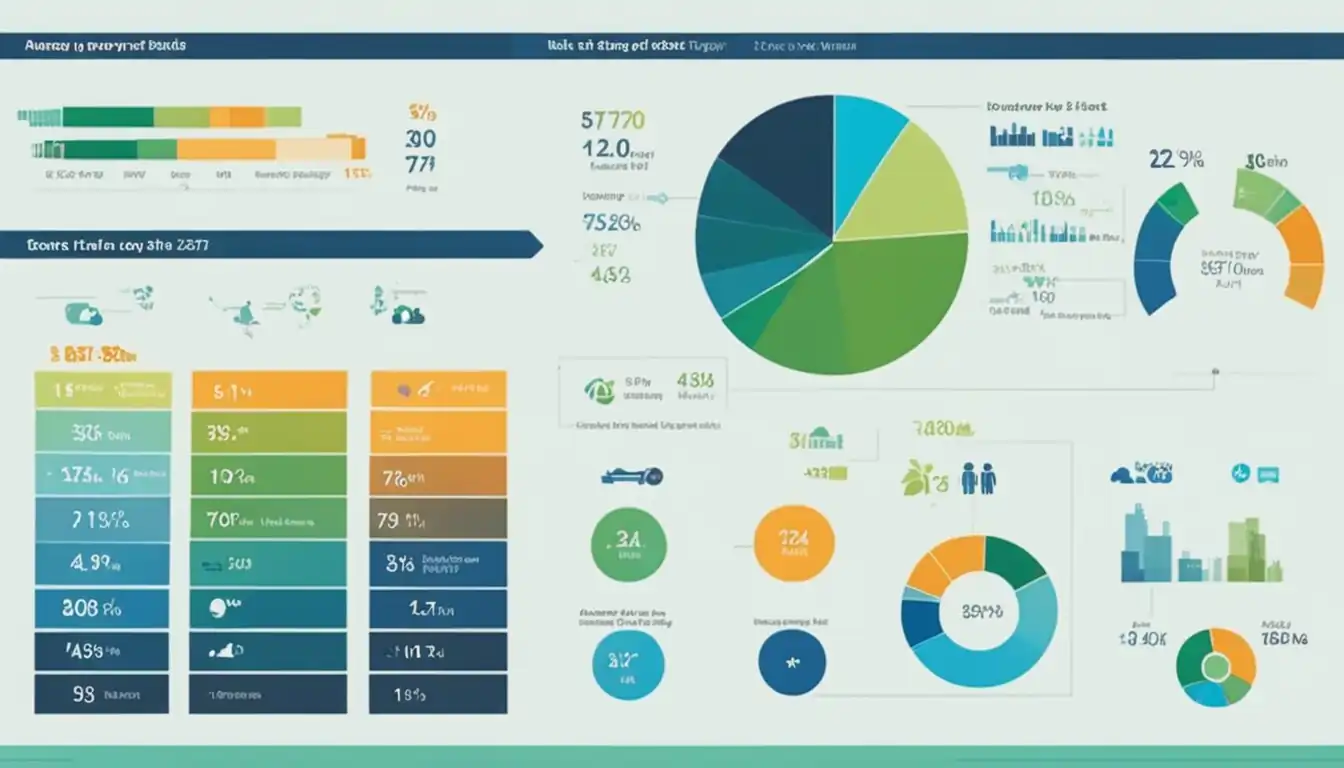Mastering Content Inventory for SEO

When it comes to mastering content inventory for SEO, having a solid understanding of what it entails is key. Content inventory is not just about counting the number of pages on your website; it's about analyzing the quality and relevance of each piece of content to ensure maximum impact. By diving deep into data collection, analyzing your content's performance, and leveraging insights for SEO enhancement, you can take your website to the next level.
Understanding Content Inventory
What is Content Inventory?
Content inventory refers to the process of cataloging and analyzing all the content on a website. This includes everything from web pages and blog posts to images and videos. By creating a comprehensive list of all the content assets on a site, marketers can gain valuable insights into what is currently available and identify areas for improvement.
Why It's Crucial for SEO Success
Content inventory plays a crucial role in SEO success for several reasons:
Identifying Opportunities: By conducting a content inventory, marketers can identify gaps in their current content strategy and uncover opportunities for creating new, high-performing content.
Optimizing Existing Content: Analyzing existing content assets allows marketers to identify pieces that can be optimized for better search engine visibility and user engagement.
Improving Site Structure: A thorough content inventory can help marketers understand how their content is organized and presented on their site, leading to improvements in site structure that can enhance user experience and SEO performance.
In summary, mastering content inventory is essential for any successful SEO strategy as it provides valuable insights into a website's content assets and opportunities for optimization.
The First Steps to Creating a Content Inventory

Gathering the Right Tools and Resources
Before diving into creating a content inventory for SEO purposes, it is crucial to gather the right tools and resources. These tools can help streamline the process and ensure that all necessary information is captured accurately. Some essential tools for creating a content inventory include:
- SEO auditing tools: Tools like Screaming Frog, SEMrush, or Ahrefs can help you analyze your website's content and identify areas for improvement.
- Spreadsheet software: Using programs like Microsoft Excel or Google Sheets can help you organize and track your content inventory effectively.
- Content management systems (CMS): Access to your website's CMS can be helpful in pulling data on existing content.
Setting Clear Objectives
Setting clear objectives is key to mastering content inventory for SEO. Before starting the inventory process, define what you aim to achieve with it. Some common objectives include:
- Identifying gaps in content: Determine if there are any topics or keywords missing from your current content strategy.
- Improving site structure: Evaluate how well your current content is organized and structured for both users and search engines.
- Enhancing keyword targeting: Analyze how effectively your existing content targets relevant keywords and search queries.
By setting clear objectives from the outset, you can tailor your content inventory process to meet specific SEO goals effectively.
Diving Deep into Data Collection

In order to master content inventory for SEO, it is crucial to dive deep into data collection. This step involves gathering all relevant information about your website's content in a systematic and organized manner.
Methods of Collecting Content Data
- Crawl Your Website: Utilize tools like Screaming Frog or SEMrush to crawl your website and gather data on all existing pages, including meta tags, headers, and URLs.
- Google Analytics: Analyze data from Google Analytics to understand user behavior, popular pages, and traffic sources.
- Content Audit: Conduct a thorough content audit to evaluate the quality and relevance of each piece of content on your website.
- Keyword Research: Use keyword research tools like Ahrefs or Moz to identify high-performing keywords and topics for your content.
Organizing Data Effectively
Organizing data effectively is essential for managing a large amount of content inventory efficiently.
- Create a Spreadsheet: Develop a spreadsheet to track important information such as page URLs, meta descriptions, target keywords, and performance metrics.
- Use Categories and Tags: Categorize your content based on topics or themes to make it easier to analyze and optimize.
- Implement a Content Management System (CMS): Utilize a CMS like WordPress or Drupal to centralize your content inventory and make updates more streamlined.
- Regular Updates: Ensure that your content inventory is regularly updated with new information and changes to existing content.
By following these methods of collecting content data and organizing it effectively, you can master content inventory for SEO and improve the visibility of your website in search engine results.
Analyzing Your Content's Impact
When it comes to mastering content inventory for SEO, analyzing your content's impact is crucial. This involves evaluating the quality and relevance of your existing content, as well as identifying any gaps and opportunities for improvement.
Evaluating Content Quality and Relevance
One of the first steps in analyzing your content's impact is to evaluate the quality and relevance of each piece. This includes assessing factors such as:
- Relevance to Target Keywords: Ensure that your content aligns with the keywords you are targeting for SEO.
- Engagement Metrics: Look at metrics like bounce rate, time on page, and social shares to gauge how engaging your content is.
- Content Depth: Consider whether your content provides comprehensive information on the topic or if it could be expanded upon.
- Accuracy and Authority: Verify that your content is accurate and backed by credible sources to establish authority in your niche.
By conducting a thorough evaluation of your content quality and relevance, you can identify areas that may need improvement or optimization.
Identifying Gaps and Opportunities
In addition to evaluating existing content, it's important to identify any gaps or opportunities for new content creation. This can involve:
- Keyword Research: Conduct keyword research to uncover new topics or keywords that align with user intent and search trends.
- Competitor Analysis: Analyze competitor websites to see what type of content they are producing and identify areas where you can differentiate yourself.
- Content Audit: Perform a comprehensive audit of your existing content to identify gaps in coverage or topics that have not been addressed.
By identifying gaps and opportunities in your content inventory, you can develop a strategic plan for creating new, high-quality content that will improve your SEO performance.
Leveraging Inventory for SEO Enhancement

When it comes to mastering content inventory for SEO, one of the key strategies is leveraging your existing content to enhance your search engine optimization efforts. By effectively managing and optimizing your content inventory, you can improve your website's visibility and ranking on search engine results pages.
Optimizing Existing Content
Optimizing existing content is a crucial aspect of leveraging your content inventory for SEO enhancement. This involves reviewing and updating your current content to ensure it aligns with relevant keywords, meets user intent, and provides value to your audience. Here are some key steps to optimize existing content:
- Keyword Research: Conduct keyword research to identify relevant keywords that align with your target audience's search queries.
- Content Audit: Perform a comprehensive content audit to assess the quality, relevance, and performance of your existing content.
- On-Page Optimization: Update meta tags, headings, and internal links to optimize on-page elements for improved SEO performance.
- Content Refresh: Refresh outdated or underperforming content by adding new information, updating statistics, or enhancing visuals.
By optimizing existing content, you can improve its visibility in search engine results and drive more organic traffic to your website.
Strategic Decisions Based on Data Insights
In addition to optimizing existing content, leveraging inventory for SEO enhancement also involves making strategic decisions based on data insights gathered from your content inventory. By analyzing data metrics such as traffic sources, engagement rates, and conversion rates, you can make informed decisions to enhance your SEO strategy. Here are some ways to make strategic decisions based on data insights:
- Identifying Top Performing Content: Analyze data metrics to identify top-performing content that drives traffic and conversions.
- Content Gap Analysis: Identify gaps in your content inventory by comparing it with competitor websites or industry benchmarks.
- User Behavior Analysis: Analyze user behavior metrics such as bounce rate and time on page to understand how visitors interact with your content.
- Conversion Rate Optimization: Optimize high-performing pages for conversions by improving calls-to-action or lead generation forms.
By making strategic decisions based on data insights from your content inventory, you can refine your SEO strategy and drive better results for your website.
In conclusion, mastering content inventory for SEO requires a combination of optimizing existing content and making strategic decisions based on data insights. By effectively managing and leveraging your content inventory, you can enhance your website's SEO performance and achieve better visibility in search engine results pages.
Maintaining Your Content Inventory
Regular Updates and Revisions
Regular updates and revisions are essential for maintaining an effective content inventory for SEO. By consistently reviewing and updating your content, you can ensure that it remains relevant, accurate, and optimized for search engines. Here are some key steps to follow:
Schedule regular content audits: Set up a schedule for auditing your content inventory to identify outdated or underperforming pieces that need to be updated or removed.
Update metadata: Keep track of metadata such as titles, descriptions, and keywords to ensure they are aligned with current SEO best practices.
Refresh content: Regularly review and refresh existing content to keep it up-to-date and engaging for readers.
Remove outdated content: Identify and remove any outdated or irrelevant content that could be negatively impacting your site's SEO performance.
Tools That Can Help Automate the Process
There are several tools available that can help automate the process of maintaining your content inventory for SEO. These tools can streamline tasks such as tracking changes, monitoring performance metrics, and identifying areas for improvement. Some popular options include:
Content management systems (CMS): Platforms like WordPress, Drupal, or Joomla offer features that allow you to easily update and manage your content inventory.
SEO analytics tools: Tools like Google Analytics, SEMrush, or Moz provide valuable insights into how your content is performing in search results.
Content audit tools: Tools like Screaming Frog or Sitebulb can help you conduct comprehensive audits of your website's content inventory to identify areas for improvement.
By utilizing these tools and following best practices for maintaining your content inventory, you can effectively optimize your website for SEO success.
Conclusion
In conclusion, mastering content inventory for SEO requires a strategic approach that involves gathering the right tools, setting clear objectives, collecting data effectively, analyzing impact, optimizing existing content, and maintaining regular updates. By following these steps and utilizing tools that can help automate the process, you can stay ahead in the ever-evolving world of SEO and ensure your content remains relevant and impactful.